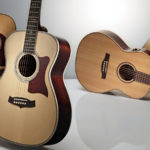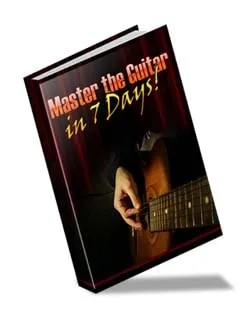The electric guitar string is a bit different from an acoustic guitar string. and it can be rather confusing to know which string is right for you.
Here is a guide to help you understand the main points and provide useful tips to make the right choice for your playing style.
Really, there are three things you need to consider when choosing the right electric guitar string.
Alloys | Gauges | Windings |

Electric Guitar String Alloys…what difference does it make?
The most popular electric guitar string is the stainless steel alloy. It is their loud volume, great tone and sustain that make them so popular. They are rust proof, non-magnetic and ideal for most electric and bass guitars.
Like everything else, there are drawbacks; in the case of stainless steel electric guitar strings it is the fact that they give a lot of finger noise. This noise is due to the round wound surface that is a little rough, and it is this also roughness that makes them slower to play.
You can get great deals on electric guitar strings here…
The nickel plated electric guitar string is a stainless string with a nickel plating. These strings are much faster and easier on the fingers, however it also softens the tone. These strings are very smooth and easy to play, with little finger noise, and have become the dominant string for many players.
Pure nickel electric guitar strings are the favorites of many jazz guitarists and acoustic players. They have a sound that is quite bright, though less than that of a stainless string. They are softer and easier to play than stainless strings, so a lot of players tend to prefer these.
Electric Guitar String Gauges…how big is big?
This refers to the diameter of the string- the bigger the number, the larger the diameter. This can affect a lot of things such as tone, volume, staying in tune, and playability. In general, there are slinky strings, ultra-light, light, medium and heavy gauge.
Slinky electric guitar strings
The slinky and ultra-light electric guitar strings are very small diameter, easy to play and bend. They are not very strong though, and do not last very long. A lot of very fast solo/lead players love these strings.
Light gauge electric guitar strings
Light gauge strings are very popular and have improved in quality and volume over the years. These are easy to play, easy to bend and have much better volume and tone than their slinky cousins.
These are a great choice for blues music, rock and lead playing. Bending strings is much easier with light gauge.
You can get great deals on electric guitar strings here…
Medium gauge electric guitar strings
Medium gauge are, in some ways, the best of all worlds. They are not difficult to play, have great tone and volume, and last a lot longer than light gage. For some players, they are too hard to press down and bend though.
Heavy gauge electric guitar strings
Heavy gauge are best left for loud, strong rhythm playing. You also need a pretty good guitar to manage these strings. They do give a great, full sound though.
Whichever kind you get, keep your strings clean! Even with a beginner guitar, the sound will ring much longer if they are kept clean. All that sweat, beer, ice cream or whatever will quickly give your strings a thud-dud sound with no tone or resonance.
Recommended Online Guitar Lessons
ArtistWorks
Features Video Exchange and virtuosos
Homespun
Features Dozens Of Artists
Guitar Tricks
Every style you can imagine
Gibson Learn & Master
DVD’s for learning
Electric Guitar String Windings…why are they wound up?
Your guitar strings are greatly affected by how they are wound. Winding is how the core wire is finished. The standard string is round-wound, which means a round wire is spun around the core. Round wound strings have great tone and volume, but are sticky and tend to give a lot of finger noise. They are not the best for fast solos, jazz guitar, or leads.
If you have ever played flat-wound, or ribbon wound strings, you are familiar with the almost oily feel. These are very slick and easy to play. However, they sacrifice brilliance and are not a good choice for rock and roll guitar. Jazz musicians usually love these strings though.
There are two other choices for bass guitars that are worth mentioning: ground wound and nylon taped strings. Both of these can be a great option.
Ground wound are really round wound strings that are machine polished to smooth the rough surface. The bright tone is retained, and they are nearly as smooth as flat wound strings. The nylon taped strings are coated with a Teflon like material to make them more playable. This gives an interesting sound, much like an acoustic bass.
You can get great deals on electric guitar strings here…
How to choose electric guitar strings
The best way is to ask around, get advice, then just try different strings. Keep a record of the strings you use, including the gauge diameters. This is because manufacturers use different classifications for the several gauges. One company might consider a light a medium, for example.
How often should you change guitar strings?
That depends on how much you use them! If you play professionally, you will most likely change them for every gig. If you only play periodically, maybe every couple of weeks or so.
In any case, you should change them every six months, otherwise they will just lose their tone and become dead sounding. There are many excellent companies, such as Fender, Ernie Ball, D’Addario, Martin, Darco and many more.
How to change your guitar strings
This video by Taylor Guitars, says it all




 Sign up to receive a free ebook: Master The Guitar in 7 days! (available for a limited period)
Sign up to receive a free ebook: Master The Guitar in 7 days! (available for a limited period)